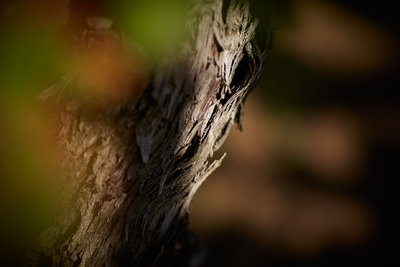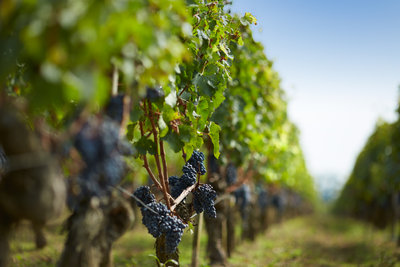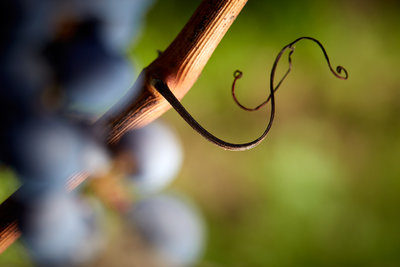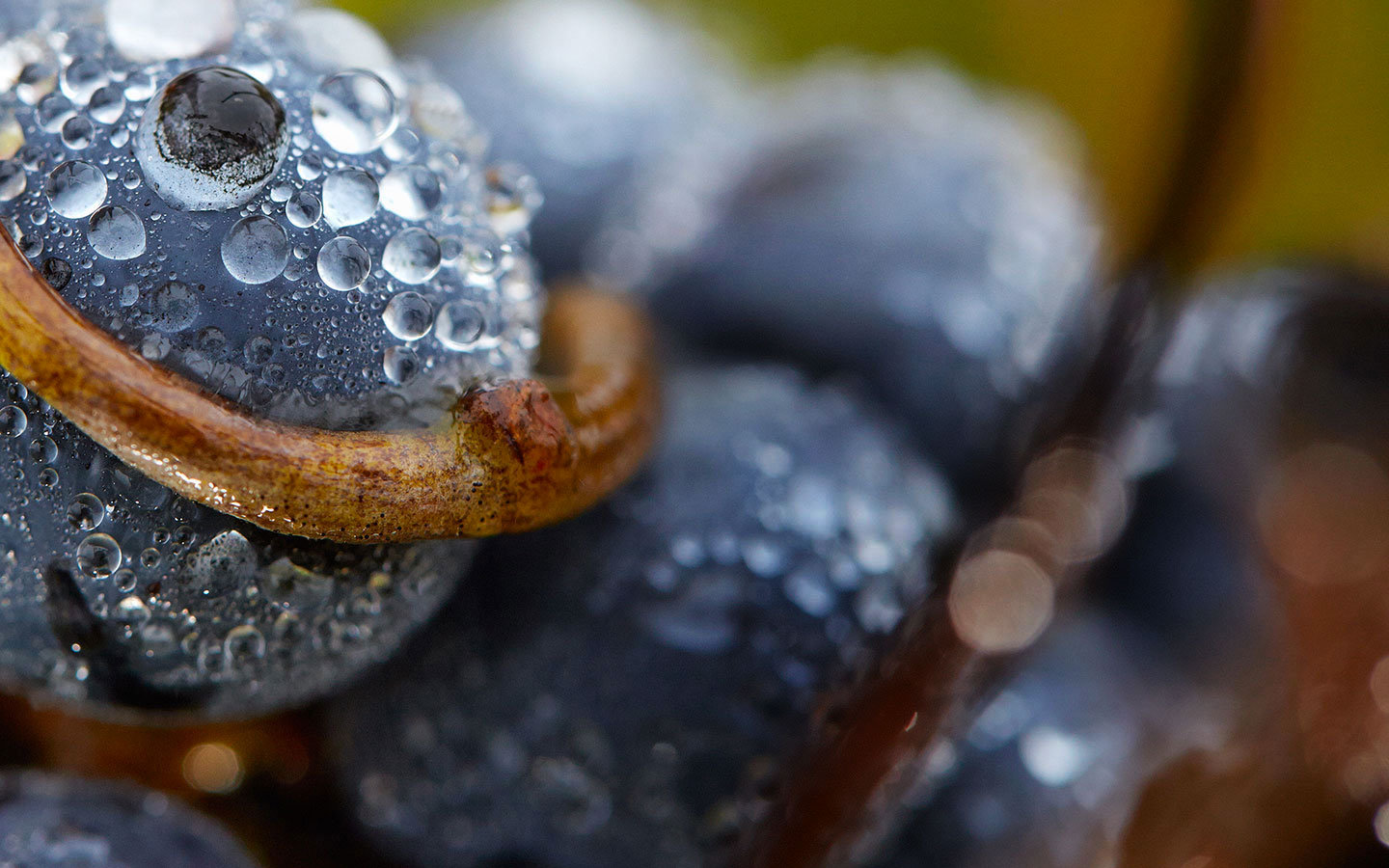Merlot
60%

Merlot parcels are mostly
situated on the limestone plateau where there is clay-limestone soil over
"starfish limestone”. This is an optimal setting since Merlot is perfectly
adapted to clay-limestone soils and the dense starfish limestone plays an
important role in supplying water to the vines. During a dry summer, there is
no lack of moisture; even at a height of several meters, water is fed to the
vines by the thick, compact, homogeneous limestone bedrock which provides 35 to
70% of the plant's water requirements between flowering and harvest. Inversely,
heavy rains are prevented from stagnating around the vines since the soil's
permeability provides rapid drainage of excess water towards the limestone
which absorbs it like a sponge.
Merlot is well-adapted to clay-limestone areas since it better expresses its potential on moist and cool soils. It contributes deep color, power and roundness to the wine.


